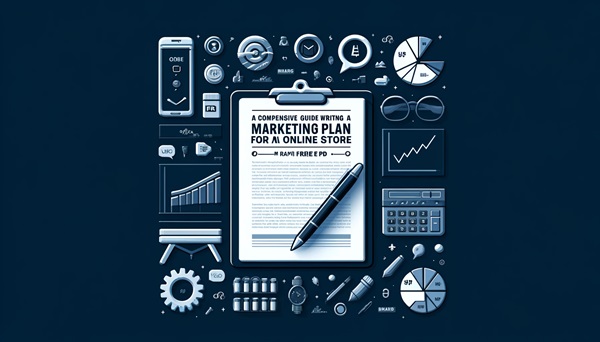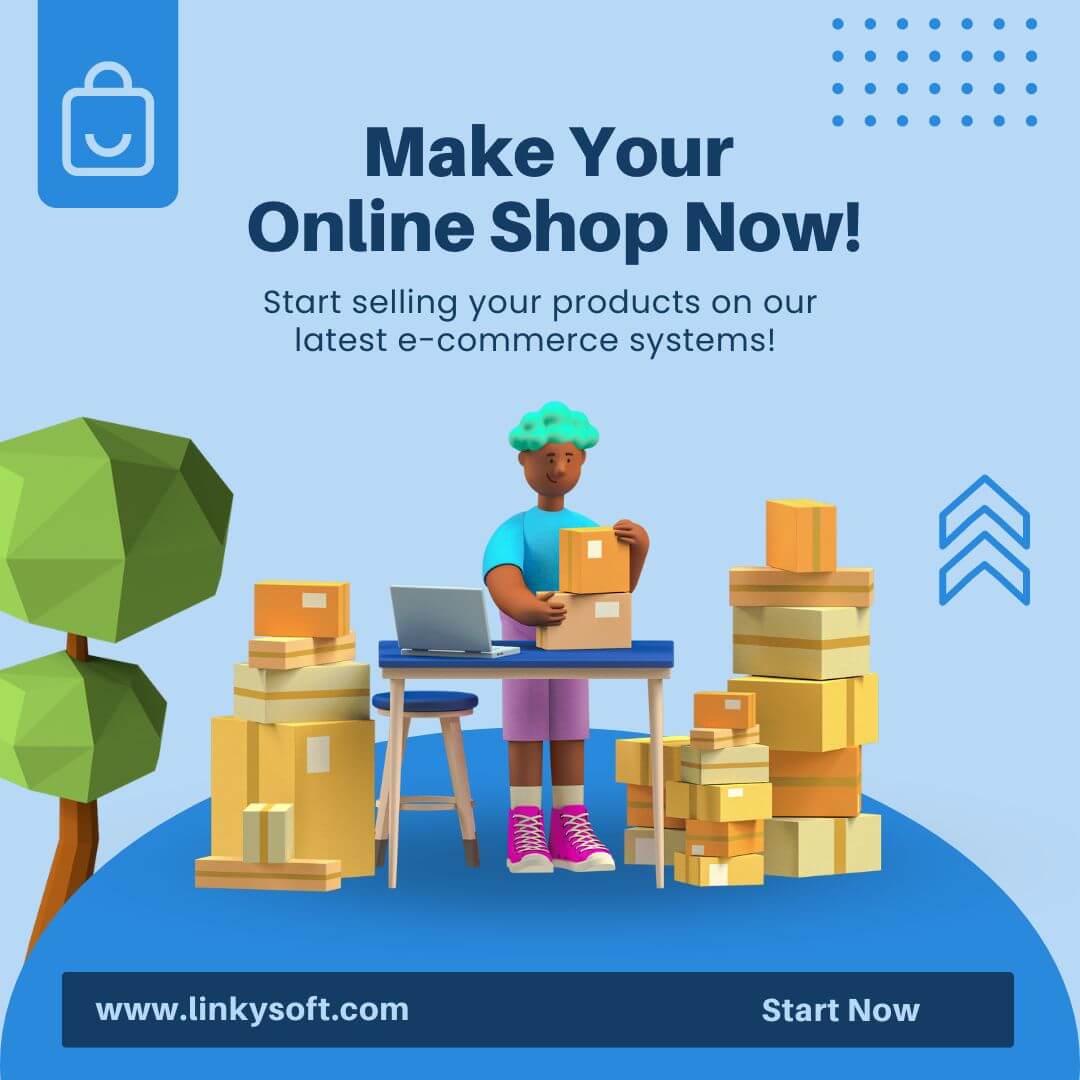In the highly competitive landscape of e-commerce, merely setting up an online store is no longer enough. To thrive, you need a clear, structured, and well-researched marketing plan. This article will serve as "A Comprehensive Guide To Writing A Marketing Plan For An Online Store Free PDF" that not only helps you understand the essential components of a marketing plan but also provides you with actionable steps to create one tailored to your business.
Whether you're a small business owner or managing a large-scale multi-vendor platform like Togar or Togar Pro, this guide will help you understand the strategic importance of a marketing plan. Additionally, we'll discuss examples, trends, and the use of technology, including Cartz, for managing your e-commerce store efficiently.

1. The Role of a Marketing Plan in E-commerce Success
Before diving into the specific components of your marketing plan, it's crucial to understand why having one is essential for your online store's success. A marketing plan isn't just a roadmap; it's the backbone of your business strategy, especially in the fast-paced e-commerce world.
Providing Clear Business Direction
A well-defined marketing plan aligns your business objectives with actionable strategies. Whether you aim to increase customer engagement, drive more traffic, or improve sales, the plan serves as a blueprint for your marketing efforts. It also helps you allocate resources effectively and measure performance.
Example
Consider a new e-commerce store that wants to boost its first-year sales. By defining a goal of increasing monthly traffic to 50,000 visitors and converting 5% of them into customers, you can build your strategy around this, using various channels like SEO, email marketing, and paid advertising.
Adapting to Market Trends
The e-commerce industry is constantly evolving with new technologies, platforms, and consumer behavior shifts. By regularly updating your marketing plan, you stay ahead of the curve and remain competitive. This can involve adopting trends like personalization, mobile-first strategies, or integrating with advanced e-commerce systems like Togar Pro, which offers tools for managing complex multi-vendor setups.
Trusted Reference
According to Statista, global retail e-commerce sales amounted to approximately $5.7 trillion in 2022, highlighting the immense growth and competition within the industry. As competition rises, having a well-documented marketing plan is essential for long-term success.
2. Identifying and Understanding Your Target Audience
Your target audience is at the heart of every marketing decision. Without a clear understanding of who they are, your marketing efforts may not resonate or deliver the desired results. Defining your audience enables you to tailor your messaging, offers, and channels to attract the right customers.
Segmenting Your Audience
Segmentation divides your audience into groups based on specific criteria, allowing you to create highly personalized marketing messages. You can segment your audience by:
- Demographics (age, gender, location)
- Psychographics (lifestyle, values, interests)
- Behavior (buying patterns, product usage)
Example of Audience Segmentation
A store selling sports gear can create specific campaigns for different segments. For example, targeting young adults interested in fitness and wellness with gym equipment offers, while targeting another segment of older adults who are more interested in leisure sports gear like golf.
Creating Detailed Customer Personas
Once you’ve segmented your audience, the next step is to create detailed customer personas. A persona is a fictional representation of your ideal customer, helping you visualize who you’re marketing to. Each persona should include demographic information, buying habits, preferred communication channels, and pain points.
Practical Example
For instance, you may have a customer persona named "Sarah," a 30-year-old fitness enthusiast who prefers shopping via mobile and values eco-friendly products. This persona will guide you in designing targeted campaigns, such as mobile-exclusive offers and sustainability messaging in your ads.
3. Performing a Comprehensive SWOT Analysis
A SWOT (Strengths, Weaknesses, Opportunities, Threats) analysis is a powerful tool that helps you gain a full understanding of your online store’s internal and external factors. This analysis should be a core part of your marketing plan as it informs your strategy by highlighting your competitive edge while identifying areas that need improvement.
Strengths
Strengths are the internal aspects of your business that give you an advantage over competitors. These could include superior product quality, excellent customer service, or a well-optimized website. For example, a strength of using Togar is its robust multi-vendor management, which allows you to scale operations seamlessly.
Weaknesses
Weaknesses are internal limitations that could hinder your store’s performance. Common weaknesses include limited marketing budgets, a lack of brand awareness, or a poor mobile user experience. Identifying these will allow you to create strategies that turn these weaknesses into strengths.
Opportunities
Opportunities are external factors you can capitalize on to grow your business. These might include rising consumer interest in sustainable products, growing e-commerce adoption in emerging markets, or technological advancements like artificial intelligence and machine learning.
Threats
Threats are external challenges that may negatively affect your business. These could include new competitors entering your market, changing consumer behavior, or regulatory changes that impact your operations.
Example
An online store selling organic skincare products may face a threat from new competitors offering similar products at lower prices. To mitigate this threat, the store can focus on building brand loyalty and emphasizing product quality and sustainability through marketing campaigns.
4. Crafting a Strong Unique Value Proposition (UVP)
Your unique value proposition (UVP) is what sets you apart from competitors. It clearly communicates the unique benefits your products or services offer and why customers should choose you. A strong UVP is crucial in e-commerce, where consumers have a multitude of choices.
Developing Your UVP
To develop a strong UVP, consider the following factors:
- Customer Pain Points: What problem are you solving for your customers?
- Product Differentiation: What makes your products or services different?
- Emotional Appeal: How can you connect with customers on an emotional level?
Examples of UVP
An online bookstore may have the UVP: "The largest collection of rare and vintage books, delivered to your doorstep within 48 hours." This UVP emphasizes the product's uniqueness and the fast delivery service, which are key differentiators.
Testing and Refining Your UVP
Once you've developed your UVP, it's important to test it across different channels. You can use A/B testing on your website, social media ads, and email campaigns to see which version resonates best with your audience. Use customer feedback to refine your UVP further.
5. Setting Clear Marketing Goals and KPIs
Your marketing plan should outline clear, measurable goals and the key performance indicators (KPIs) that will help you track progress. Without measurable goals, it’s impossible to determine whether your marketing efforts are successful.
Examples of Marketing Goals
Marketing goals should be aligned with your overall business objectives. Common marketing goals include:
- Increase Website Traffic: Grow your monthly site visitors by 20% over the next six months.
- Boost Conversion Rates: Improve your conversion rate from 2% to 5% within the next quarter.
- Enhance Customer Retention: Increase repeat purchase rates by 15% by the end of the year.
Choosing the Right KPIs
KPIs provide insight into the effectiveness of your marketing strategies. Some KPIs you might track include:
- Customer Acquisition Cost (CAC): How much it costs to acquire each new customer.
- Lifetime Value (LTV): The total revenue a customer generates over their lifetime.
- Conversion Rate: The percentage of website visitors who make a purchase.
Using E-commerce Tools to Track KPIs
Platforms like Cartz and Google Analytics allow you to track these KPIs in real-time. By regularly reviewing your KPIs, you can make data-driven decisions to optimize your marketing plan.
6. Allocating Your Marketing Budget Effectively
One of the most important components of your marketing plan is the budget. Without a clear understanding of how much you're willing to spend, you may overspend on ineffective strategies or underspend on high-return tactics. Allocating a proper budget helps ensure that every marketing dollar is put to good use.
Breakdown of Typical E-commerce Marketing Budget
To give you an idea of how to allocate your marketing budget, consider these common expenses:
- Social Media Advertising: Platforms like Facebook and Instagram are ideal for paid ads.
- SEO and Content Marketing: Invest in high-quality content creation and optimization for organic traffic growth.
- Email Marketing: Develop automated email campaigns to nurture leads and retain customers.
- Paid Search: Use Google Ads to target high-intent keywords for instant visibility.
Pro Tip
Investing in a robust e-commerce system like Togar Pro can help streamline marketing efforts by providing integrated tools for campaign management, analytics, and customer segmentation.
7. Choosing and Optimizing Your Marketing Channels
The right marketing channels depend on your target audience, business goals, and budget. A combination of organic and paid channels typically provides the best results. Here's a breakdown of the most effective channels for e-commerce marketing.
1. Social Media Marketing
Social media platforms such as Facebook, Instagram, and TikTok are powerful tools for building brand awareness, driving traffic, and engaging with your audience. Regular posting of engaging content, paired with targeted ads, can amplify your reach.
2. Search Engine Optimization (SEO)
SEO is critical for long-term, sustainable growth. Optimizing your website for relevant keywords, like "A Comprehensive Guide To Writing A Marketing Plan For An Online Store Free PDF", ensures your store ranks highly on search engines. High-ranking pages drive organic traffic, which is often more cost-effective than paid ads.
3. Email Marketing
Email marketing remains one of the most effective channels for driving conversions. Personalized email campaigns can nurture leads and convert one-time buyers into repeat customers.
4. Pay-Per-Click Advertising (PPC)
PPC platforms like Google Ads allow you to target high-intent keywords, driving instant traffic to your site. While PPC can be more costly, it is highly effective for generating quick results, especially when combined with a strong SEO strategy.
8. Measuring Success and Refining Your Strategy
Once your marketing plan is in motion, it’s essential to regularly assess its performance. Continuous monitoring allows you to refine your approach and ensure you're meeting your objectives. Tools like Google Analytics, social media insights, and e-commerce dashboards provide valuable data on campaign performance.
Regular Performance Reviews
Schedule regular reviews to track your KPIs and assess which strategies are performing well. If a certain tactic isn’t delivering results, don’t hesitate to adjust your approach.
Example
If you're running a Facebook ad campaign but seeing low engagement, you might tweak the targeting parameters or the creative elements, such as the ad copy or images. Regular reviews and optimization ensure that your marketing efforts remain effective and aligned with your goals.
9. Conclusion
This comprehensive guide has provided you with the essential steps for creating a successful marketing plan for your online store. By following the strategies and insights presented in this article, you can ensure that your e-commerce business is well-positioned to attract and retain customers, boost sales, and maintain a competitive edge in the market.
Download the free PDF version of this guide to use as a handy reference as you continue to refine and implement your marketing plan. And don't forget to explore powerful e-commerce management systems like Togar Pro and Cartz to support your e-commerce business with advanced tools and features.








